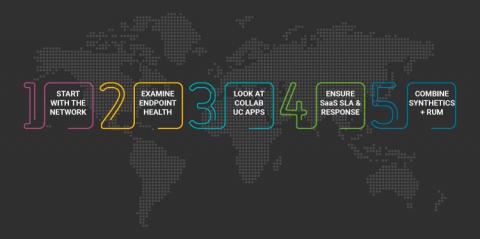Operations | Monitoring | ITSM | DevOps | Cloud
Microsoft 365
The latest News and Information on Microsoft 365 and related technologies.
IT Teams Flying Blind During Microsoft Outage
On June 5th, Microsoft experienced an outage for many of their Microsoft 365 services including: Outlook on the web, Teams, OneDrive for Business and SharePoint Online due to a service update. When Microsoft service availability goes down the scramble is on for IT teams to quickly pinpoint the issue to mitigate productivity roadblocks for their users and this outage was no different.
Microsoft Outlook on the web Outage, June 6th, MO572252
Yesterday’s Microsoft 365 Suite-wide outages, led to continual faults for Outlook on the web on Tuesday, June 6th. When the outages pile up, it becomes difficult to tell when one starts and the other ends. The latest: Can’t access Outlook on the web and other Microsoft services and features The prior day incidents began with EX571516: Some users are unable to access Outlook on the web, and may experience issues with other Exchange Online services.
Why You Should Care About Microsoft Teams Monitoring
With the rapid growth of hybrid work, the need for collaboration tools that centralize audio, video, chat and documents have never been more critical. Most departments in your organization use Microsoft Teams to conduct business; VIPs conducting executive meetings in your Teams Meeting Rooms, Sales organizing calls and meetings with their prospects, Customer support teams contacting your customers and scheduling potential meetings to help them, and R&D organizing their meetings.
Microsoft 365 Outage on June 5th, EX571516, MO571683
On Monday morning, June 5th there was a wide scale outage for Microsoft 365. Interestingly, for this one, they first reported it with a barrage of duplicate health status emails (why, we have no idea) but the issue was much more widespread than that – it was affecting most Microsoft Office 365 services: The first incident was Incident EX571516: Some users are unable to access Outlook on the web, and may experience issues with other Exchange Online services.
Office 365 Monitoring: The Challenges, and What to Do About Them
Office 365 is used by more than one million companies around the world. Business employees count on these apps constantly to do their jobs, whether they’re writing documents, updating spreadsheets, building slides, or checking email. While cloud-based apps like Office 365 offer undeniable advantages for enterprises and business users, they also create tough challenges for IT operations and network operations (NetOps) teams.
Slack And MS Teams As A Device - xMatters Support
5 Tips to Improve Employee Digital Experiences
Companies' reliance on technology grows daily. However, with Information Technology (IT), infrastructure complexities on the rise, overall system performance fluctuates. Any network, app, or service delay hinders individual and corporate performance. Identifying the source of these digital pain points resembles searching for a needle in a haystack. What follows are a handful of tips, so you sift through the hay faster, reduce outages, and improve employee digital experiences.
Troubleshooting Microsoft Teams
What's Missing in Free User Experience Monitoring Tools?
You get what you pay for is a common axiom, one that even applies to infrastructure management solutions. Cloud vendors bundle Digital Experience Management (DEM) solutions with their services, seemingly at no extra charge. But such products lack the capabilities needed to understand how enterprise computing resources function. As a result, corporations do not make needed adjustments and lose time, revenue and increase user frustration.










